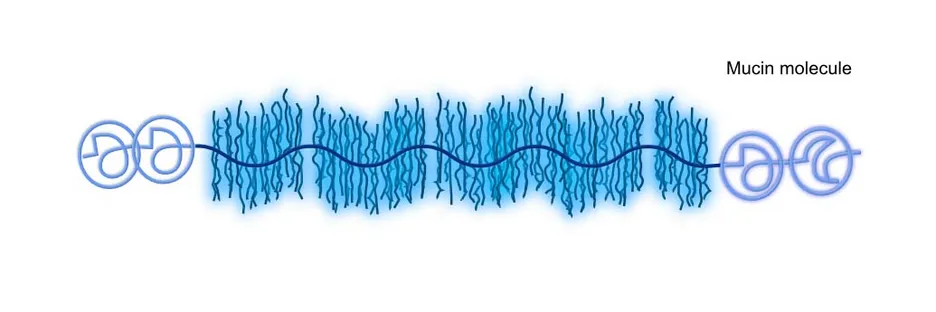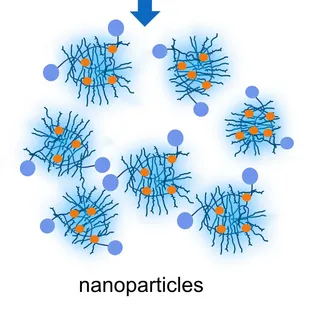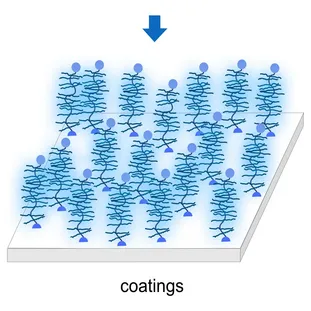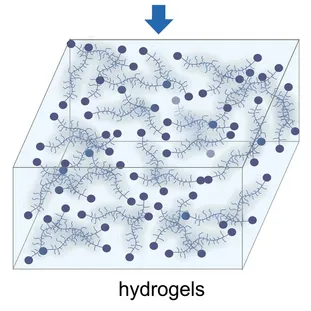In our research, we turn biopolymers into different types of materials: nano/ microparticles, coatings/ films and gels/ solutions.
Nano/ Microparticels
Nano- and microparticles are often used to encapsulate pharmaceuticals and to release them in a controlled manner. We use different biopolymers to create such drug carrier particles, we stabilize those particles with different techniques, we adjust the degradation behavior and drug release kinetics of the particles, and we study the uptake efficiency of those particles into cells.
Recent publications on this topic:
T.M. Lutz, C. Kimna, and O. Lieleg, A pH-stable, Mucin Based Nanoparticle System for the Co-delivery of Hydrophobic and Hydrophilic Drugs, International Journal of Biological Macromolecules, 215, pp. 102-112 (2022)
C. Kimna, B. Winkeljann, J. Hoffmeister, and O. Lieleg, Biopolymer-Based Nanoparticles with Tunable Mucoadhesivity Efficiently Deliver Therapeutics Across the Corneal Barrier. Materials Science & Engineering C, 121, 111890 (2021)
C. Kimna, T.M. Lutz, H. Yan, J. Song, T. Crouzier, and O. Lieleg, DNA Strands Trigger the Intracellular Release of Drugs from Mucin-Based Nanocarriers. ACS Nano. 15(2) 2350-2362 (2020)
Coatings/ Films
Many synthetic materials used in medicine or medical engineering do not interact well with cells and tissues. However, this issue can be mitigated by coating those materials with a thin biopolymer layer – and a similar strategy can also reduce the biofouling propensity of the materials and tissue damage generated by mechanical/tribological stress. In addition, thin films made from biopolymers can also support the wound healing process and can locally release drugs close to the point of need.
Recent publications on this topic:
C. Kimna, M.G. Bauer, T.M. Lutz, S. Mansi, E. Akyuz, Z. Doganyigit, P. Karakol, P. Mela, and O. Lieleg, Multifunctional ‘Janus-type’ Bilayer Films Combine Broad-Range Tissue Adhesion with Guided Drug Release. Advanced Functional Materials, DOI: 10.1002/adfm.202105721 (2022)
C.A. Rickert, B. Wittmann, R. Fromme, and O. Lieleg, Highly Transparent Covalent Mucin Coatings Improve the Wettability and Tribology of Hydrophobic Contact Lenses. ACS Applied Materials & Interfaces, 12 (25) 28024-28033 (2020)
B. Winkeljann, M.G. Bauer, M. Marczynski, T. Rauh, S. Sieber and O. Lieleg, Covalent Mucin Coatings Form Stable Anti-Biofouling Layers on a Broad Range of Medical Polymer Materials. Advanced Materials Interfaces, 7 (4) 1902069 (2020
Solutions/ Gels
As solutions or gels, biopolymers can also act as biological lubricants. Moreover, those bulk systems can host cells and can serve as model systems to study the microscopic principles governing the diffusive spreading of molecules through tissues or across mucosal barriers. In the context of the latter, we also investigate how environmental pollutants such as black carbon or microplastic particles alter the properties of biological gels as they cover our mucosal tissues.
Recent publications on this topic:
H. Yan, M. Melin, K. Jiang, M. Trossbach, B. Badadamath, K. Langer, B. Winkeljann, O. Lieleg, J. Hong, H.N. Joensson, and T. Crouzier, Immune-Modulating Mucin Hydrogel Microdroplets for the Encapsulation of Cells and Microtissue. Advanced Functional Materials, 9 (39) 2105967 (2021)
M. Marczynski, C. Rickert, S. Semerdzhiev, W. van Dijk, I. Segers-Nolten, M.M.A.E. Claessens, and O. Lieleg, Alpha-Synuclein penetrates mucin hydrogels despite its mucoadhesive properties. Biomacromolecules, 20 (12) 4332-4344 (2019)
J. Song, B. Winkeljann, O. Lieleg, The lubricity of mucin solutions is robust towards changes in physiological conditions. ACS Applied Bio Materials, 2, 8, 3448-3457 (2019)



